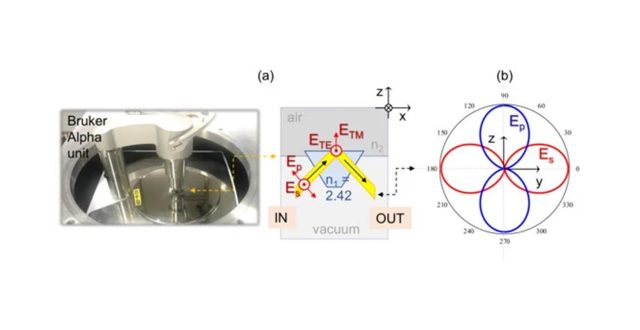Capabilities of the attenuated total reflection (ATR) at THz wavelengths for increased sub-surface depth characterisation of (bio-)materials are presented. The penetration depth of a THz evanescent wave in biological samples is dependent on the wavelength and temperature and can reach 0.1–0.5 mm depth, due to the strong refractive index change ∼0.4 of the ice-water transition; this is quite significant and important when studying biological samples. Technical challenges are discussed when using ATR for uneven, heterogeneous, high refractive index samples with the possibility of frustrated total internal reflection (a breakdown of the ATR reflection mode into transmission mode). Local field enhancements at the interface are discussed with numerical/analytical examples. Maxwell’s scaling is used to model the behaviour of absorber–scatterer inside the materials at the interface with the ATR prism for realistic complex refractive indices of bio-materials. The modality of ATR with a polarisation analysis is proposed, and its principle is illustrated, opening an invitation for its experimental validation. The sensitivity of the polarised ATR mode to the refractive index between the sample and ATR prism is numerically modelled and experimentally verified for background (air) spectra. The design principles of polarisation active optical elements and spectral filters are outlined. The results and proposed concepts are based on experimental conditions at the THz beamline of the Australian Synchrotron.

Four polarisation analysis could be made possible for attenuated total reflection (ATR) measurements at THz and IR spectral ranges
WRHIからのお知らせ おすすめ
物質理工学院 森川淳子教授とSaulius Juodkazis特任教授の国際共著論文
“Attenuated Total Reflection at THz Wavelengths: Prospective Use of Total Internal Reflection and Polariscopy”
が、Appl. Sci. に掲載されました。(DOI:10.3390/app11167632 )
詳しくはこちら
<Abstract>
